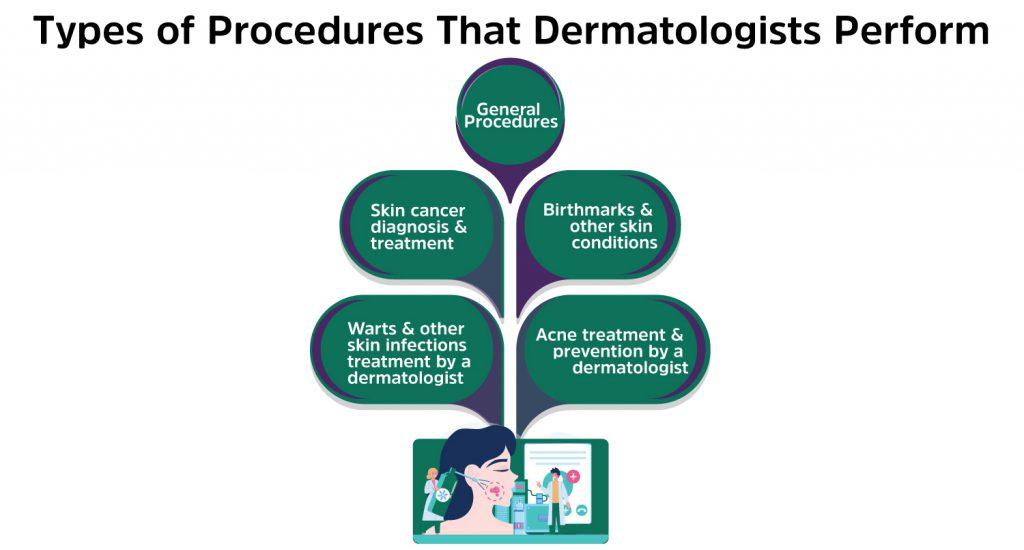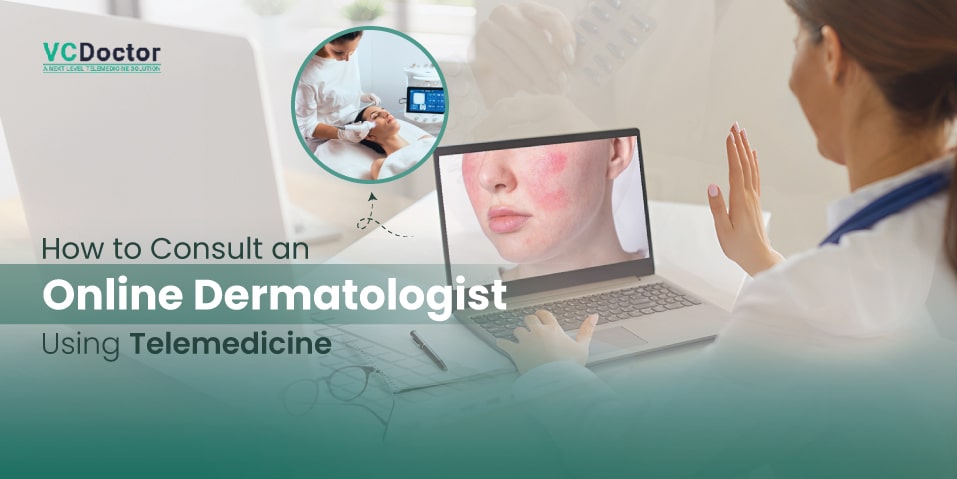How to Consult an Online Dermatologist Using Telemedicine
A online dermatologist is a professional medical provider who focuses on your skin, nail, and hair condition and various diseases. With the widespread use of telemedicine software, dermatologists also treat patients through telehealth technology like video and phone calls, remote real-time appointments, and more.
Online dermatologist mostly use digital images to diagnose and monitor various skin conditions. With a dermatologist online consultation, making a real-time virtual dermatologist appointment and getting medical solutions is easier. Excited to know more about online dermatologists and how they use telemedicine? This article is a complete guide on how online dermatologist consultation use telemedicine. We have also discussed everything about dermatology telemedicine software. Let’s dive in!
Table of Contents
- What is Online Dermatologist?
- Why do People Need to See a Online Dermatologist?
- Common Conditions That Dermatologists Treat
- Types of Procedures That Dermatologists Perform
- Use of Telemedicine in the Dermatology
- The Technology Used by Teledermatologist
- Conclusion
- FAQs
What is Online Dermatologist?
Think of it as a digital doctor for all things related to skin! best online Dermatologist use digital tools to diagnose and treat various skin conditions. The comfort and convenience make it an effective alternative to traditional in-person dermatology consultations.
Why do People Need to See a Online Dermatologist?
There are many reasons that people need to see a dermatologist.
- First and foremost, dermatologists are experts in skin care. They can diagnose/ skin conditions and recommend the most effective treatment plan for each individual.
- Secondly, dermatologist virtual visit can often diagnose skin conditions early when treatment is more likely to succeed. This allows patients to avoid potential complications down the road.
- Thirdly, dermatology is a specialized field with many treatments that can be used for various skin conditions such as acne, psoriasis, eczema, and many others.
- Many people must learn about other options if their dermatologist can not help them solve their skin condition.
- telemedicine solution for patients can make it easier for patients to get the care they need and avoid long wait times in person. It also allows dermatologists to provide more personalized treatment plans tailored to the individual’s needs.
Common Conditions That Dermatologists Treat
Dermatologists treat many conditions, including acne, psoriasis, eczema, rosacea, and many others. Therefore, dermatology is a highly specialized field with many treatments.
For some skin conditions, such as acne or psoriasis, the treatment plan that works best for one patient may not be the best option for another person.
By using telemedicine technology to provide accurate and timely information to dermatologists about their patient’s conditions, they can better provide quality.
Types of Procedures That Dermatologists Perform
Here are a few types of procedures that dermatologists perform:

Skin cancer diagnosis and treatment
A dermatologist is a medical professional specializing in treating skin diseases. Dermatologists use telemedicine to perform many procedures, including skin cancer diagnosis and treatment. The use of telemedicine solutions allows dermatologists to diagnose and treat patients from all over the world, making them more efficient and effective in providing treatment to patients with skin conditions.
Birthmarks and other skin conditions
A dermatologist is a physician who specializes in the treatment of skin diseases. Dermatologists are often sought for their expertise in skin treatment and treatment of various skin conditions, such as acne, psoriasis, eczema, dermatitis, and skin cancer.
To help achieve the best treatment results for their patients, dermatologists use use best telemedicine for dermatologists to perform procedures that would be difficult or impossible to do in person. These include the diagnosis and treatment of birthmarks and other skin conditions.
Warts and other skin infections treatment by a dermatologist
A dermatologist is a medical professional specializing in treating skin conditions. Using telemedicine technology, dermatologists commonly perform various procedures, including wart removal and treatment for other skin infections. In addition, Best Telemedicine Software allows Online Dermatologist acne to treat patients from anywhere in the world, offering patients greater convenience and faster access to quality care.
Acne treatment and prevention by a dermatologist
Dermatologists treat acne in various ways, depending on the stringency of the condition and the needs of the individual patient. For example, they may prescribe topical treatments, such as acne or acne, or perform skin exams to determine the best treatment plan.
In some cases, dermatologists may perform biopsies to evaluate acne treatment and determine its effectiveness. This can allow dermatology patients living far away from their local dermatologist to receive care from an expert in a different location.
General procedures
A dermatologist is a medical professional specializing in diagnosing and treating skin diseases. In addition, telemedicine for dermatologist perform various procedures using telemedicine technologies, including diagnostic testing, assessment, and treatment of skin conditions.
They may also use other medical equipment, such as lasers and ultrasound machines, to treat skin diseases. Telemedicine allows dermatologists to provide their patients with remote diagnosis and treatment from anywhere in the world. The benefits of telemedicine technology for dermatology are numerous and far-reaching, making it an invaluable tool in treating skin disease.
Use of Telemedicine in the Dermatology
These are a few points mentioning the use of technology in teledermatology:
- Dermatology is highly specialized, with many patients living far away from local dermatologists. Telemedicine startups allows Virtual Dermatologists to treat these patients from anywhere in the world.
- Perform diagnostic testing on skin conditions;
- Provide treatment plans for skin conditions;
- Evaluate the effectiveness of acne treatments; and
- Conduct skin exams to determine the best treatment plan for patients.
The Technology Used by Teledermatologist
Telemedicine technology is used by dermatology in several different ways to improve patient care.
– Diagnose skin conditions;
– To provide treatment plans for skin conditions;
– Evaluate the effectiveness of acne treatments; and
– Conduct skin exams to determine the best treatment plan for patients.
Are you looking for a Teledermatology App?
Conclusion
Nowadays, the majority of people deal with skin issues. For contemporary solutions, they turn to dermatologists. Telemedicine is becoming an important tool for dermatology. It enables remote patient treatment by medical professionals. They also receive specialized medical care. The telehealth services platform helps physicians diagnose patients more precisely. In this article, we discussed online dermatologist and their use of telemedicine.
FAQs
1. List top benefits of online dermatologists?
Online dermatologist offer several benefits. Initially, it allows patients to be a part of consultations from the comfort of their homes. It saves a lot of time and money. Additionally, no wait time at the doctor’s clinic minimizes the chances of infectious diseases.
2. Mention the process of virtual dermatology
Virtual dermatology, known as teledermatology, includes using digital images to properly diagnose and assess a patient’s skin conditions. Some commonly treated conditions are eczema, acne, and more. During the consultation, the doctor and the patient are not physically present under a single roof.
3. What skin conditions can be treated through telemedicine software?
Some commonly treated skin conditions through dermatology telemedicine software includes:
- Skin cancer
- Eczema
- Psoriasis
- Acne
- Hair loss
- Hives
- Melasma
4. How can I ensure the security and privacy of patient data during online Dermatology consultations?
Providers or online dermatologist should use only the best telemedicine software for providers with strong encryption. The platform should follow HIPAA guidelines for patient data privacy.




